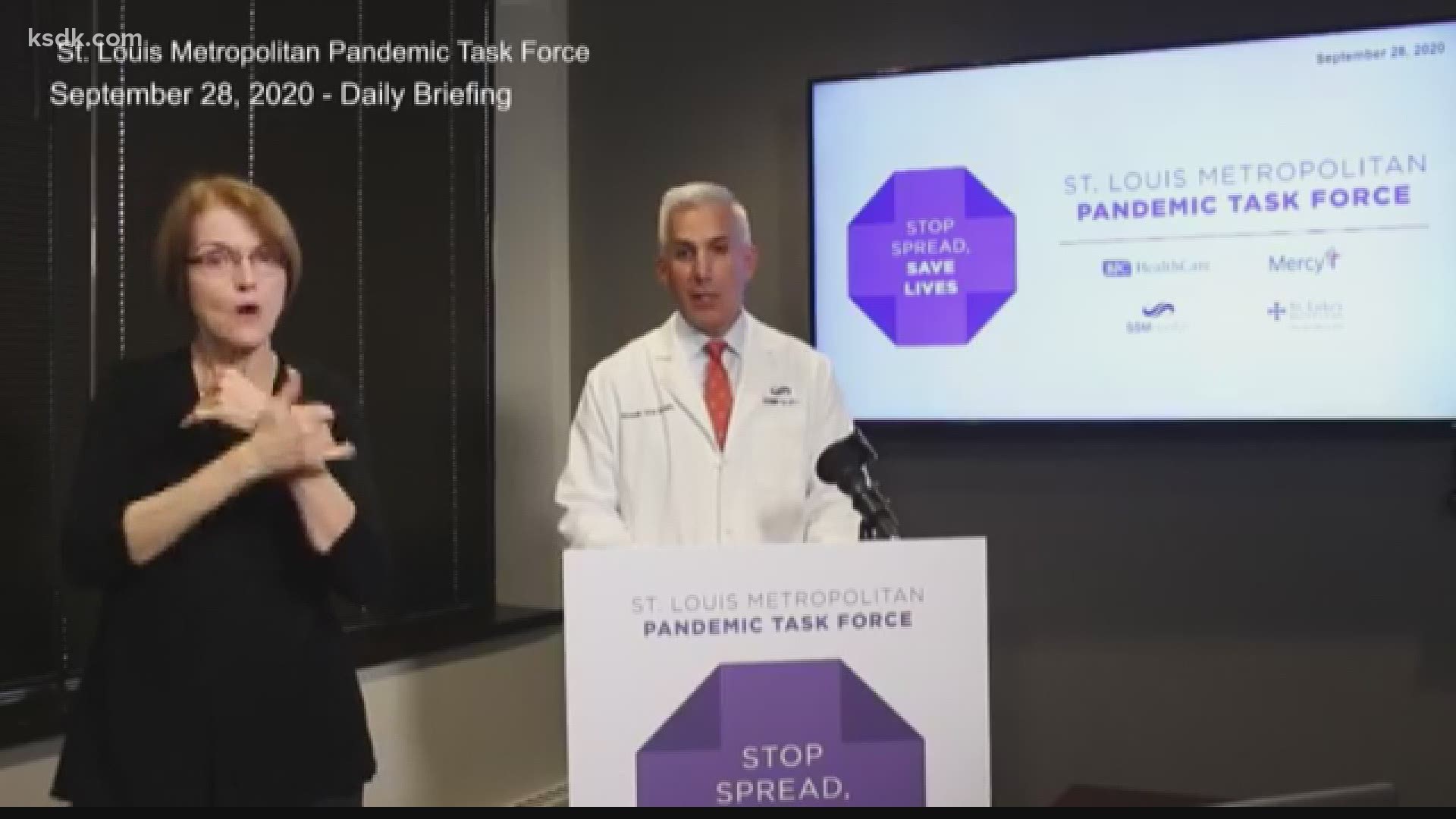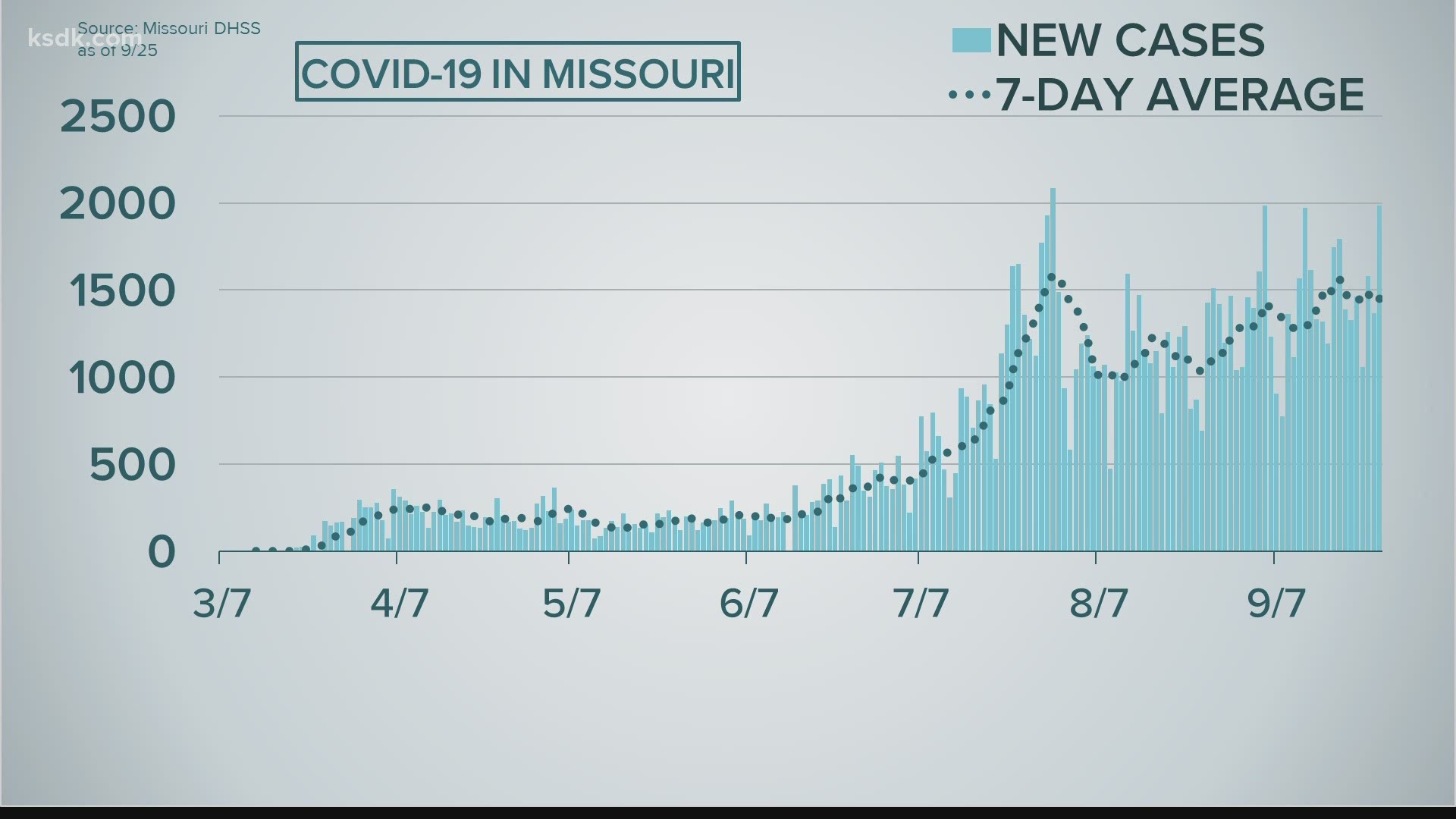ST. LOUIS — When it comes to COVID-19 patients who are hospitalized, Missouri hit a high this week, with confirmed COVID-19 hospitalizations topping 1,000 and reaching the highest point since the start of the pandemic.
Locally, hospitalizations have remained somewhat consistent.
For the past two months, the average number of new hospital admissions of patients with the virus has fluctuated between 30 to 45.
The total number of people in task force hospitals who have COVID-19 has remained in the 260 to 270 range.
However, while the St. Louis Metropolitan Pandemic Task Force is is not seeing a major change in the numbers themselves, leaders are noticing a shift when looking at the people who are being hospitalized.
"The hospitalization population appears to be changing from the more urban St. Louis City and St. Louis County, densely populated areas to those more outlining area, particularly Franklin and Jefferson Counties," Dr. Alex Garza, who leads the task force, said in Monday's briefing.
When looking at the rate of hospitalizations per 100,000 residents, Franklin (13.5) and Jefferson (13.37) Counties' rates are much higher than the rates in the City of St. Louis (4.29) and St. Louis County (7.62), which is much different than what was happening even just a couple of months ago.
"This is most likely related to some of those differences in our transmission mitigation strategies across the metropolitan area," Dr. Garza said.
In July, the City of St. Louis and St. Louis County announced mask mandates, while Jefferson and Franklin Counties have gone without them. 5 On Your Side covered protests in both Jefferson and Franklin Counties against potential mask mandates for the areas that were either never adopted or implemented.
Jefferson and Franklin Counties reopened earlier than the City of St. Louis and St. Louis County. There has also been a much different approach to going back to school and high school sports between the more rural counties and those with a more urban population.
In fact, Garza said the case numbers for the City of St. Louis and St. Louis County are actually going down while surrounding areas are either flattening or, like in the rural counties, increasing.
However, he warns the areas with lower numbers to remain vigilant.
"There's a reason we're seeing lower numbers in St. Louis city and county," Garza said.
Some things to note about the hospital data is that the numbers lag by two days because hospitals are waiting for COVID test results. Also, task force numbers are gathered from task force hospitals. There are some area hospitals that do not report to the task force, so it is highly likely the numbers are actually higher.
What is consistent amongst all of these counties is that the age group with the highest percentage of case numbers is people in their 20s, while the age group with the largest portion of hospitalizations and deaths is people in their 80s.
As the shift toward more hospitalizations for rural patients continues, capacity in these rural hospitals is already being challenged. Mercy Hospital in Washington, MO confirmed multiple COVID-19 patients had to be transferred to Mercy South last week because of capacity issues.
A spokesperson told 5 On Your Side that, as cases rise in Franklin County, the hospital is starting the week with only a few ICU beds available.


